Happening #1: Chalk Drawing
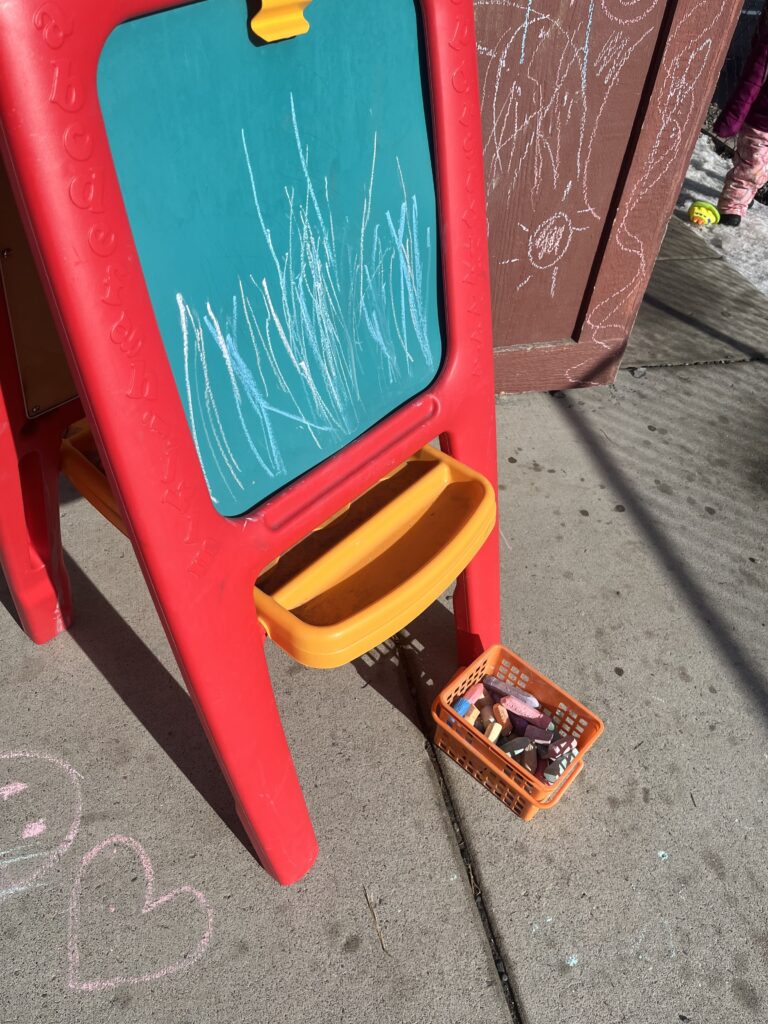
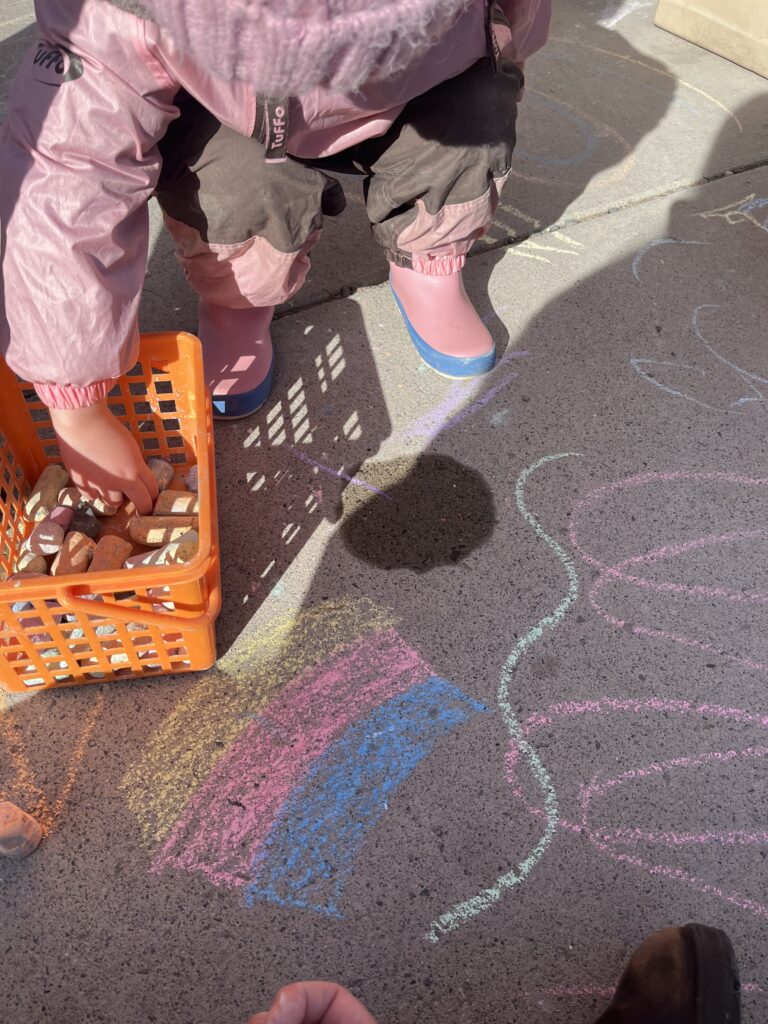
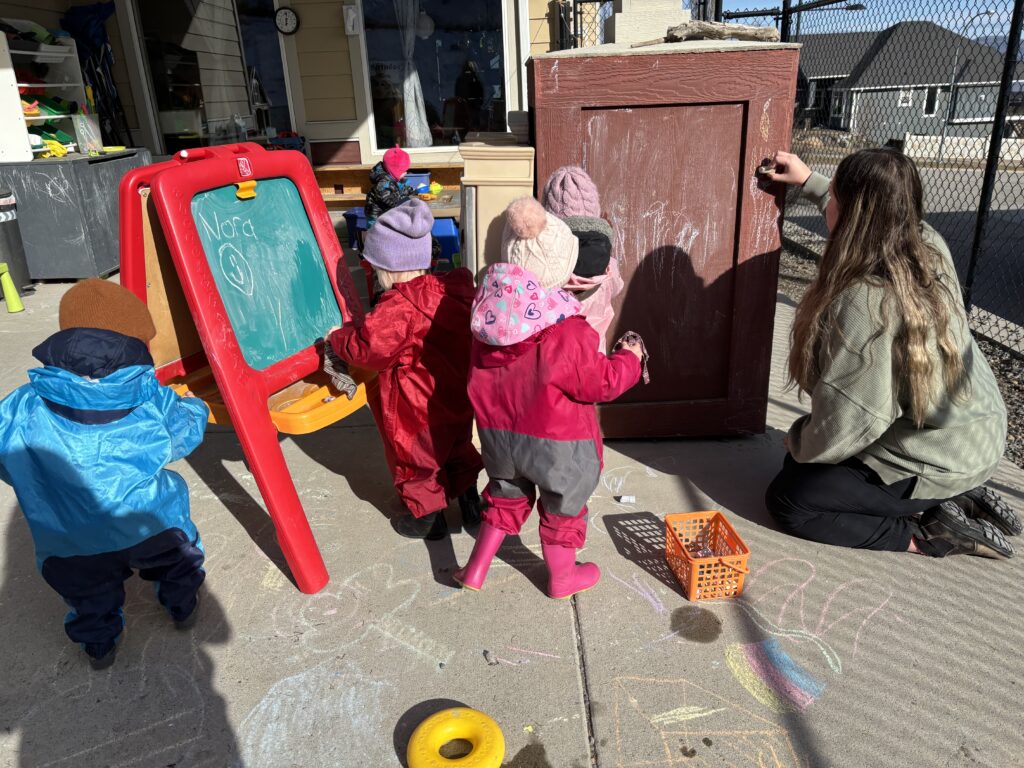
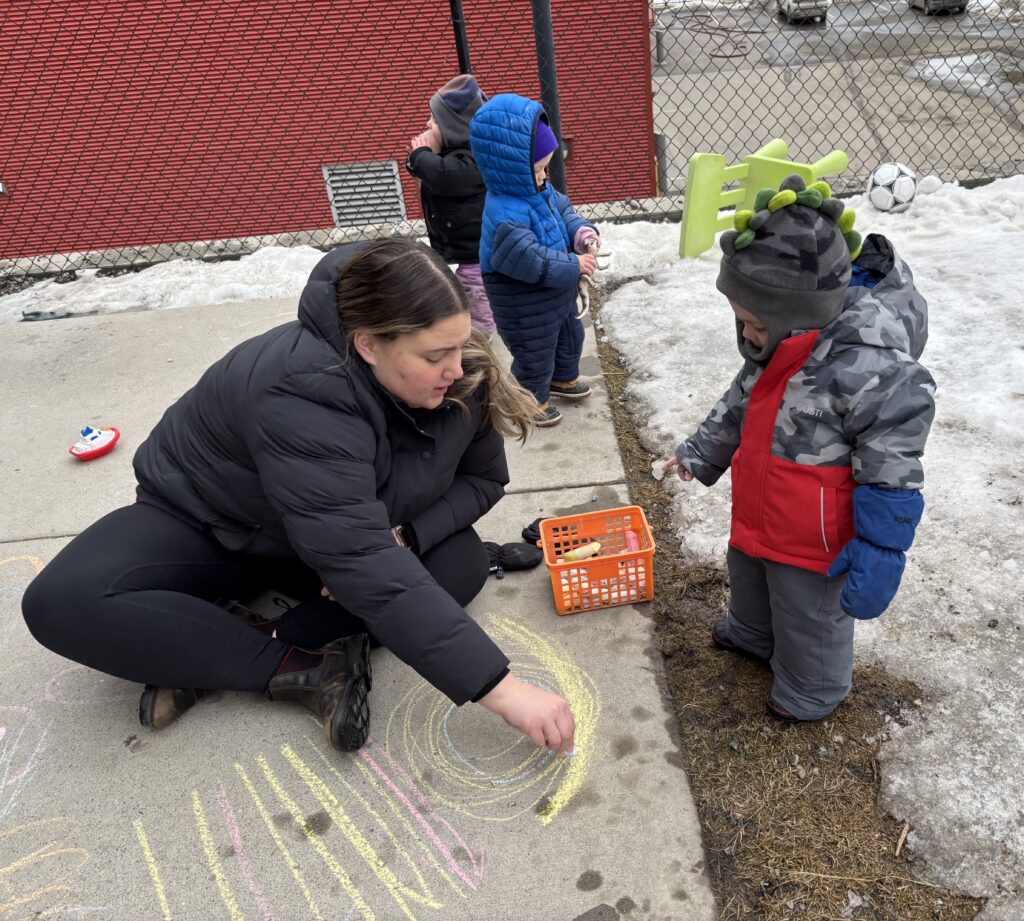
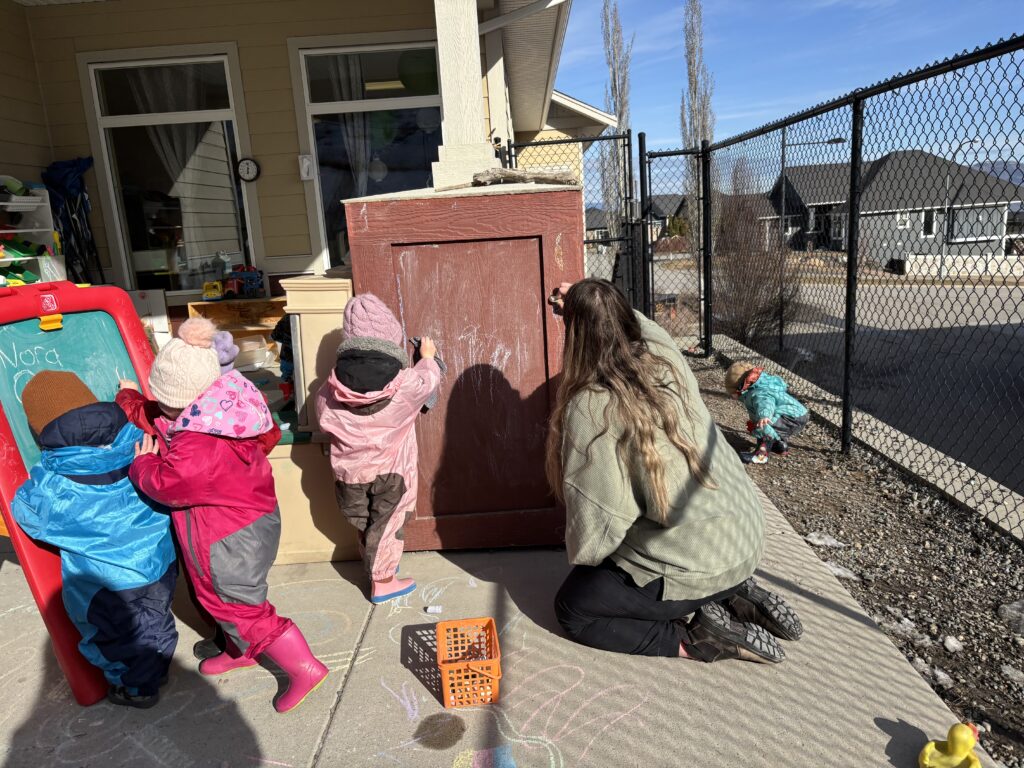
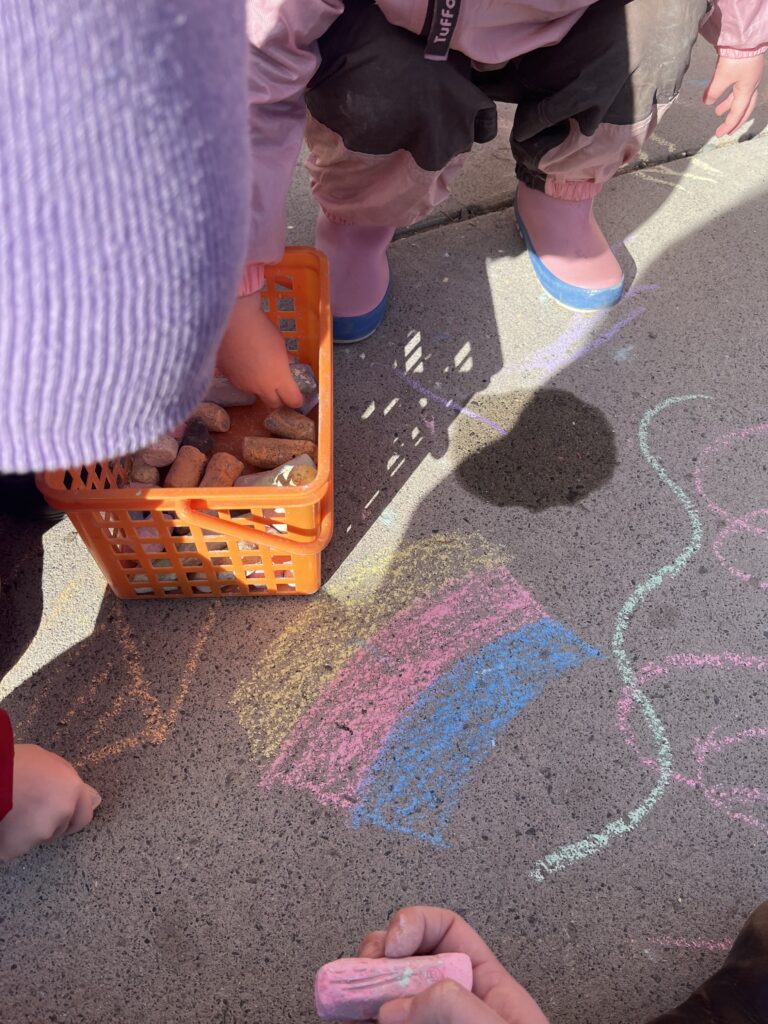
Explanation of the Happening:
I was sitting with a group of children in the backyard on the pavement. There was a basket of chalk and a chalkboard sitting on the pavement. I started drawing zig zag lines and squiggles around me, children started to join in with me, taking chalk and adding onto my drawings. In one of the chalk drawing groups, we were singing songs and drawing the motions of the songs. For example, I was singing ‘Wheels on the Bus’, I started drawing circular motions as the wheels were turning and did the side to side motion for the windshield wipers. The intention behind me sitting on the ground was to make a space where children could join me and collaborate with my drawings and talk to other children about what they were drawing. Some of the children in my practicum place are nonverbal, so using drawing as a space to express their ideas and thoughts is so important to me. The reasoning of the songs as inside the classroom, music is popular among all the children, when they hear singing or instruments, they get excited and want to join in right away. Music is something that helps with relationship building, which is important as my commitment is ‘building collaborative partnership with the children and adults in the classroom that recognizes different cultures, languages, and traditions of everyone in the room’, music can break through language barriers and connect people from all backgrounds (fostering a sense of belonging).
Thinking with the BCELF:
BC ELF Pathway – Spaces, objects, and materials: The BC ELF discusses how children should have objects that they can investigate and experiment with and are meaningful to them, and there should be spaces provided for those things. The BC ELF discusses how “Objects, space, place, rhythms, rituals, gestures, sound, children and adults – these are all interconnected and participate in the interactions and inquiries that emerge in early care and learning spaces” (p.75), I want to create a ritual around drawing where they know that if they see me sitting down to draw they know they have a space to sit and draw. I think through one of the critical questions of ‘is it important for children to have space to store projects or inquiries so they can be revisited’, it made me think what materials I can bring into the space that is more permanent and doesn’t get washed away from the weather outside. I think that I need to find a way to incorporate what I have been doing outside and bring it inside as well.
- How could I creatively consider materials and/or their presentation?
- Consider how materials are presented? How does this limit or invite experimentation and investigation? For example: paint? Is it presented on tables or on the floor? In small or large vessels? One colour or many colours?
- Is it important for children to have space to store projects or inquiries so they can be revisited? How could I talk to children about this?
Furthering my exploration:
I want to bring in materials that are more permanent in the space and that children can revisit and come back to whenever they want. I want to bring this inside the classroom as well, where children have a space to either join an educator or their peers to draw or create something. Drawing is a form of language that I think it important for children to use because it allows children to communicate what they are thinking nonverbally. I want to bring in big pieces of paper that I can tape to the wall and have crayons laid out for the children to see all the colours available to them.
Happening #2: Drawing rituals:
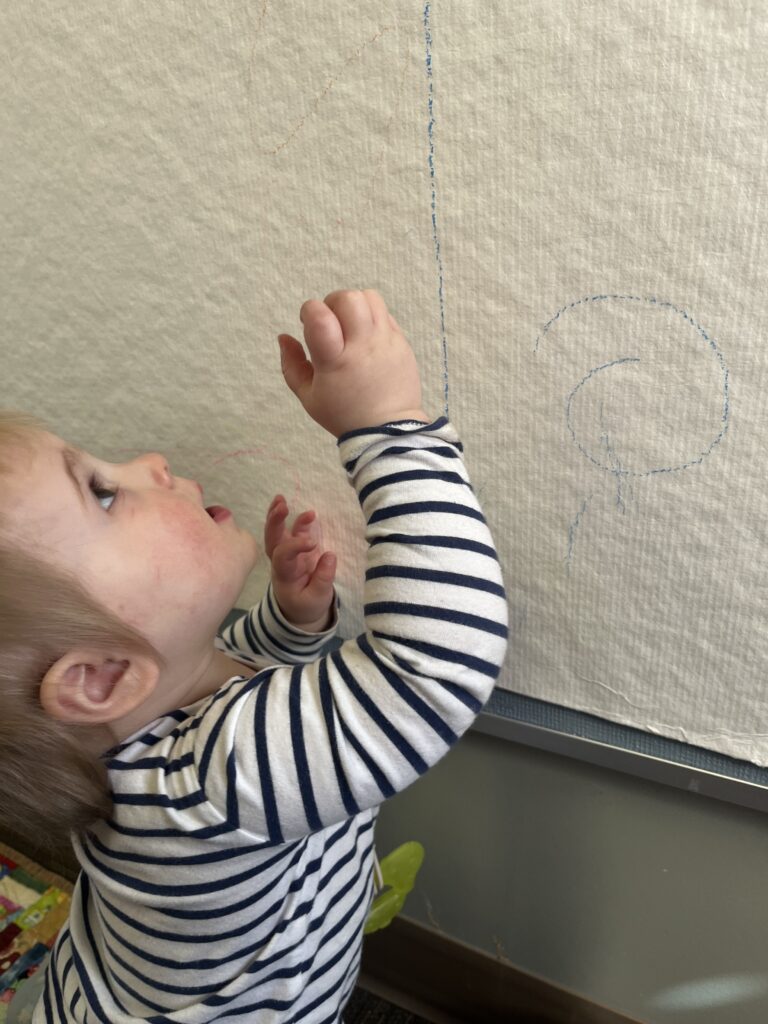
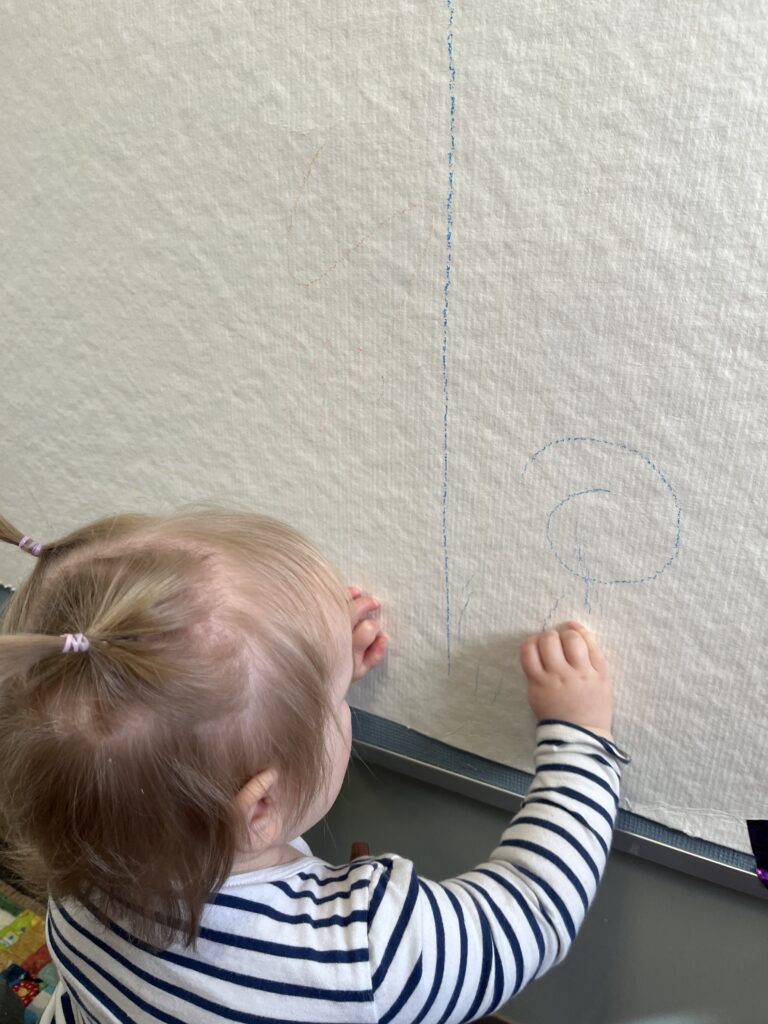
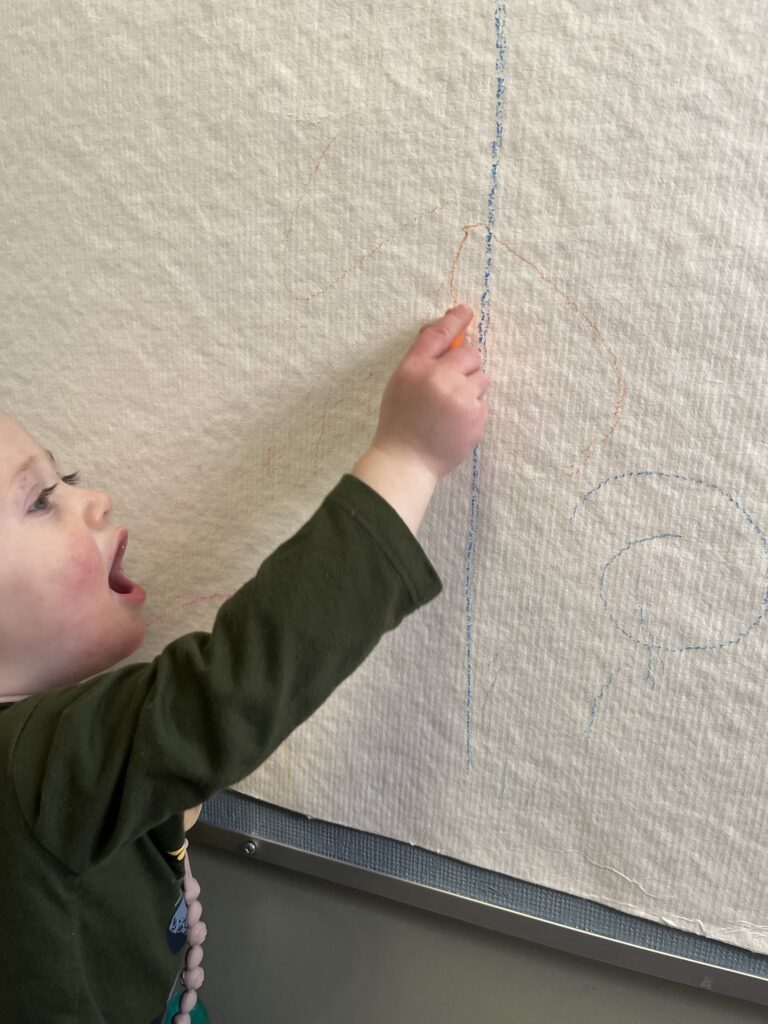
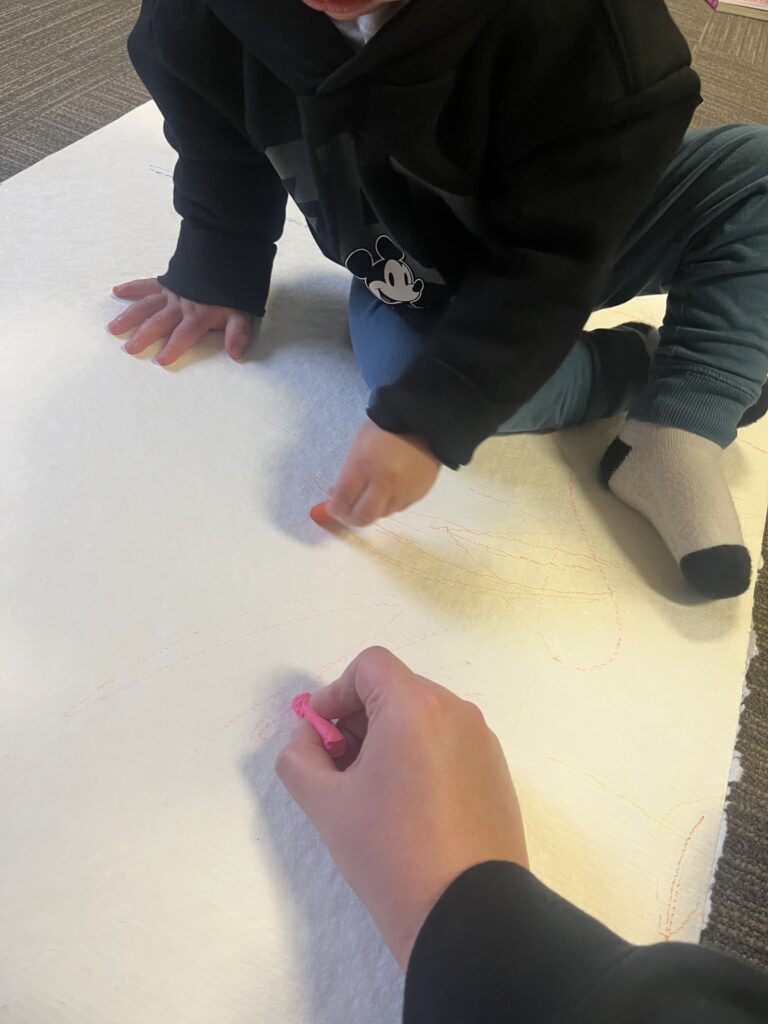
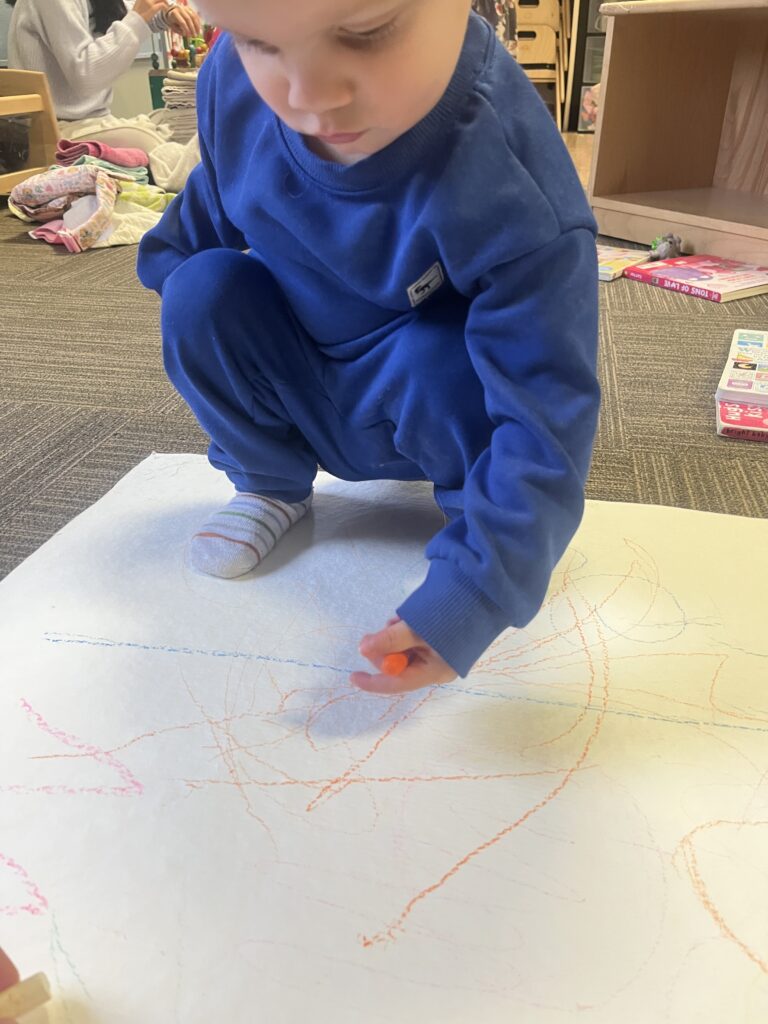
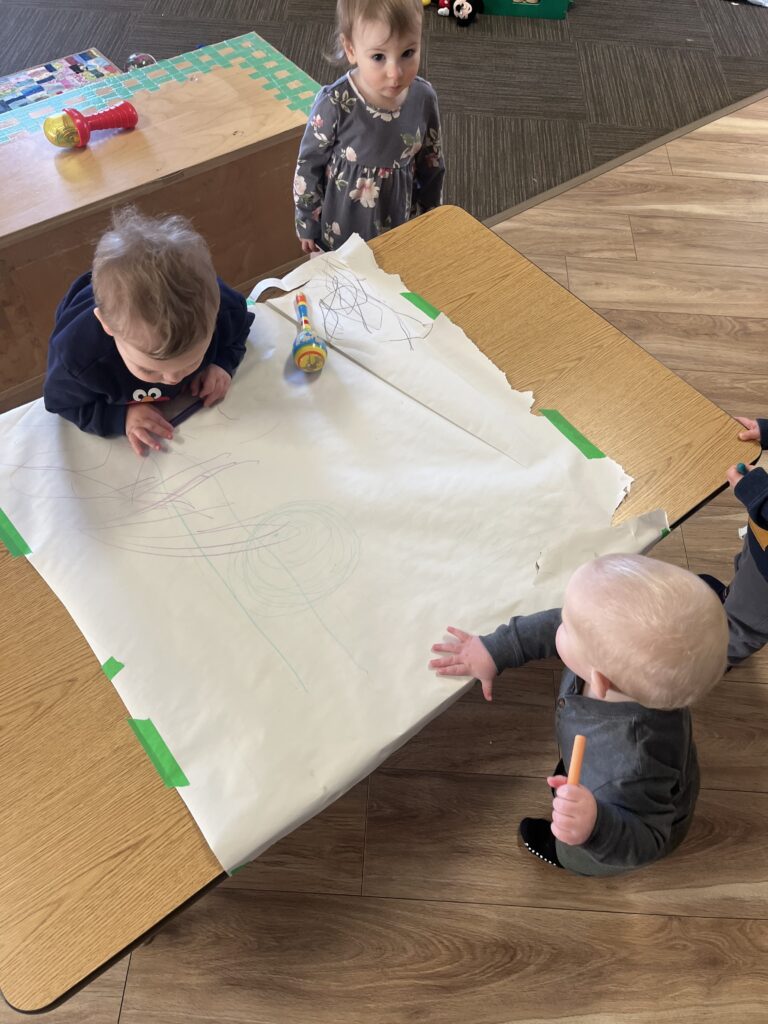
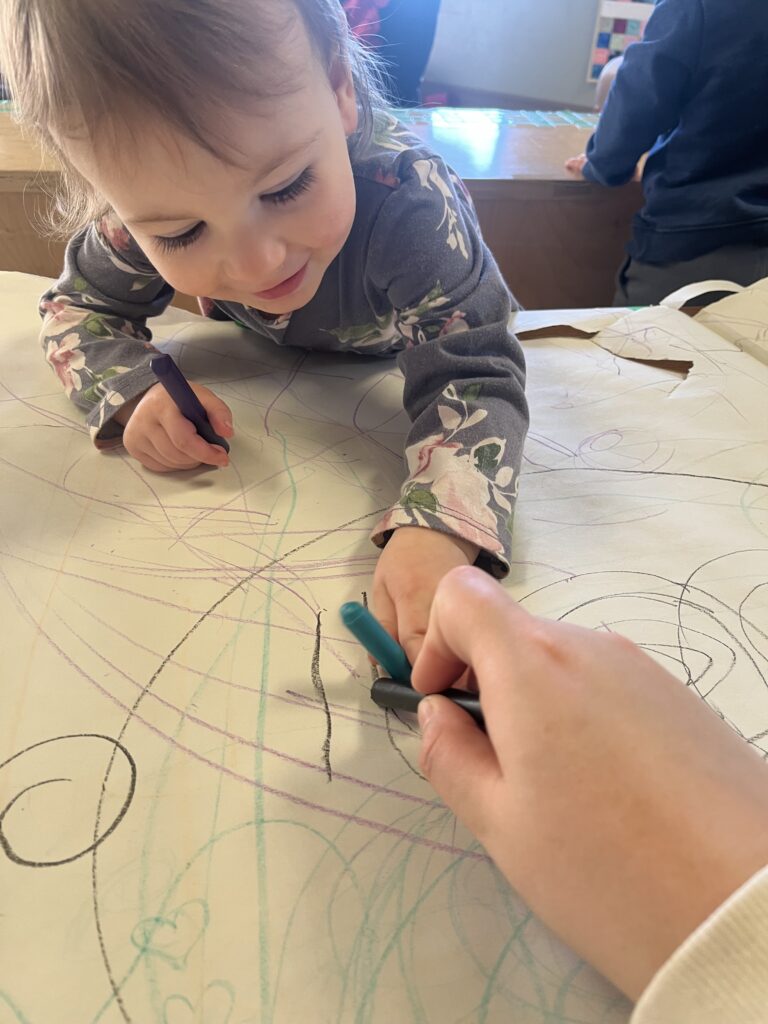
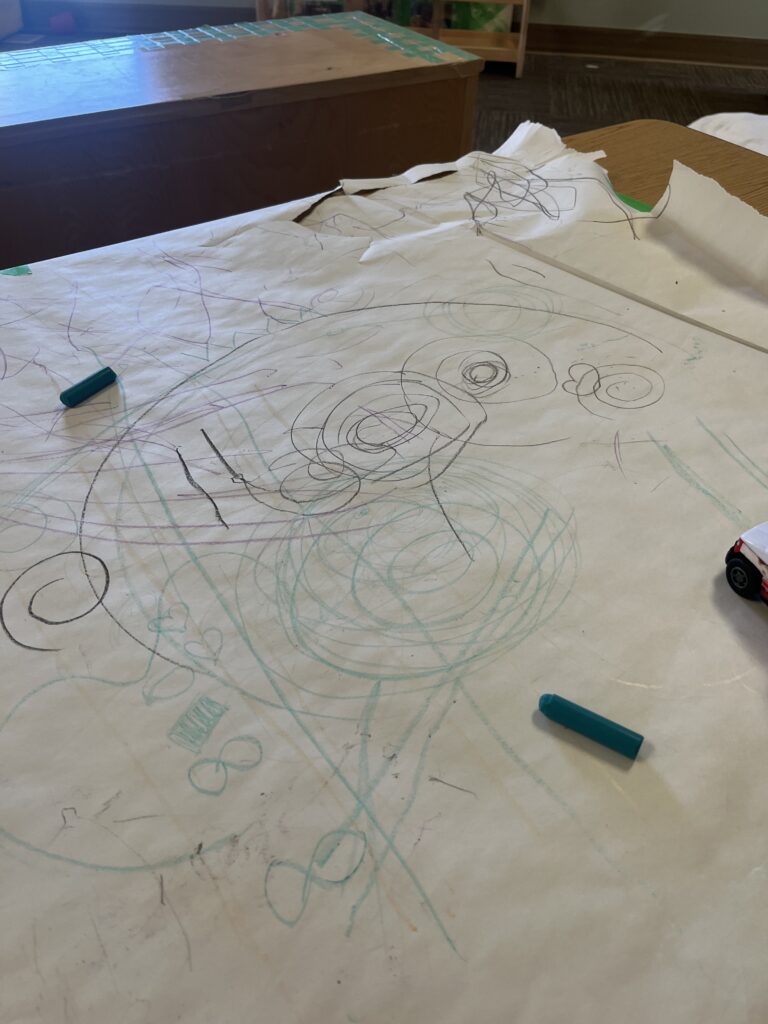
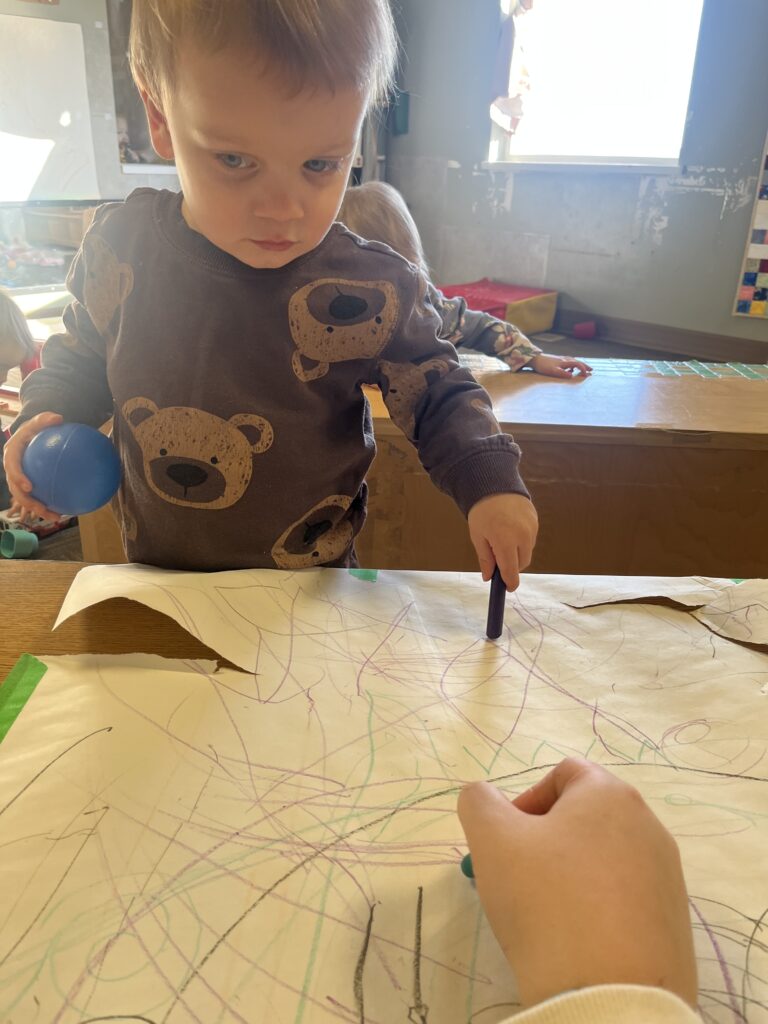
Explanation of happening:
As from my last happening, I wanted to continue with the drawing ritual and see how I could build off that and how it interests the children. The photos above are from drawing sessions I’ve had with the children, the first 3 photos are from when I had the paper on the wall and the other photos are from when I taped it to a table and had it on the floor. For each session, I set up the area for them, put the crayons out on the table and started to draw myself. I would invite children to come draw with me as they passed by or entered the room in the morning, some children came right up to me and started drawing while other children were more hesitate and observed the other children before coming over. During the drawing session on the floor the children would come and sit on it with their friends and draw around themselves or bring over toys, like cars and would drive on the drawings.
Thinking with the BCELF:
Thinking still with the ‘Others, Materials, and the World’, a pathway that I was looking at during this exploration was ‘time for engagement’, as this was a new thing to the children, it was something I have to guide children to be engaged in, meaning setting up a space for them to draw and bringing out materials for them. One thing that is important to me is slowing down in the day and taking time on certain things, rather than rushing through all the transitions in the day. These drawing sessions have been allowing the children to focus on one thing and still be able to come back and forth and continue with their drawings. One thing I wanted to experiment with was the mornings in the classroom, I want children to have more time in the morning to be engaged with something and to be welcomed in the classroom with an engaging space.
- Do my routines and schedules limit or enhance opportunities for deep involvement in or with ideas?
- What role does the clock play in my day? Do routines follow the clock or the people in my program?
- What might emerge if I considered rhythms and flows rather than routines?
Furthering my exploration:
To further my exploration, I want to bring in the pictures of the children drawing and put them up on the wall for the children to engage with them. As well, I’m going to put up the same pictures for the parents to see them in the pick up area, so I can have conversations with them about what I have been exploring with their children. Something I want to do with children, is drawing on the glass windows that connect the nap room and the play area, as I think some interesting drawings and conversations will come out of it.
Happening #3: Drawing through Glass
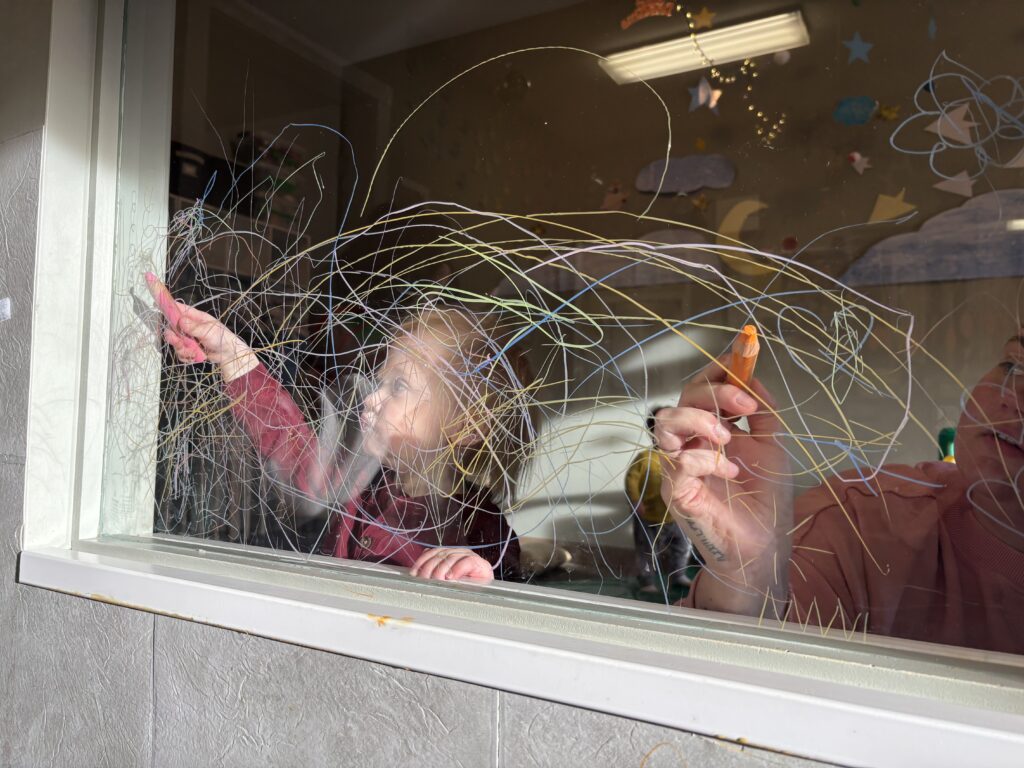
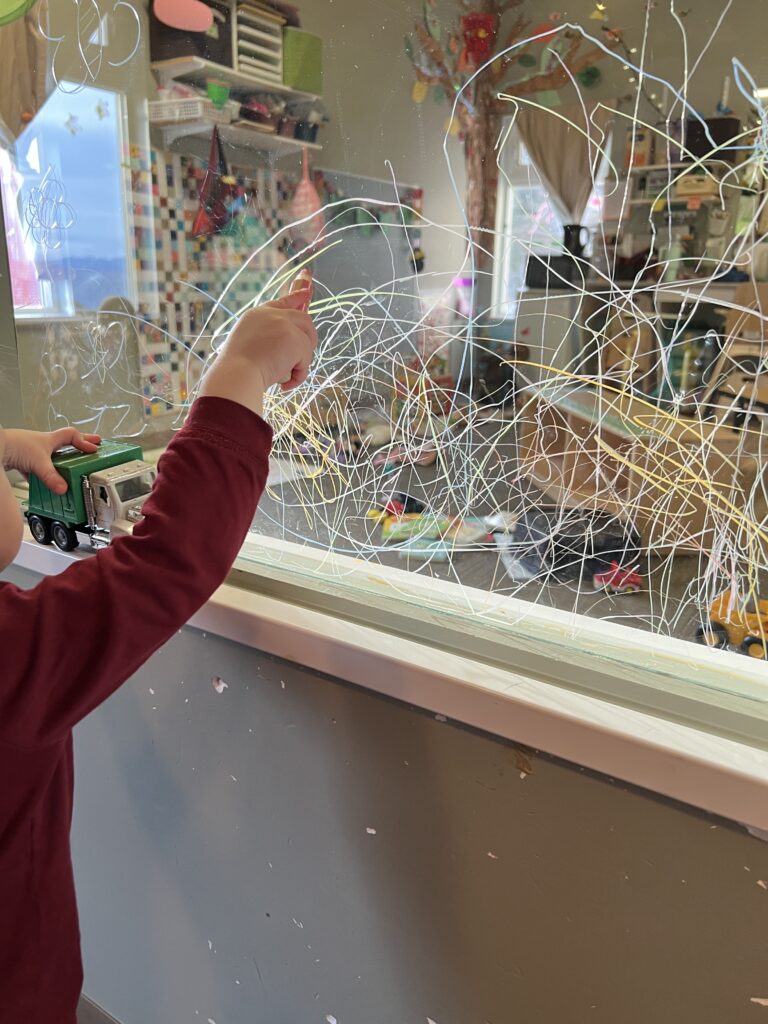
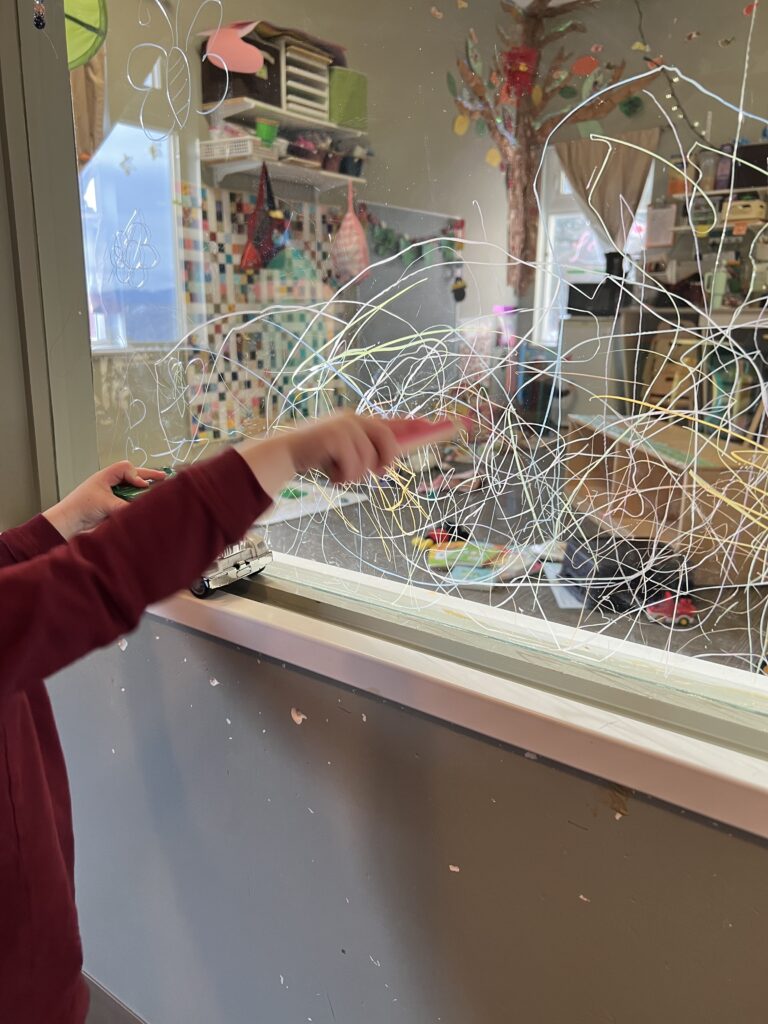
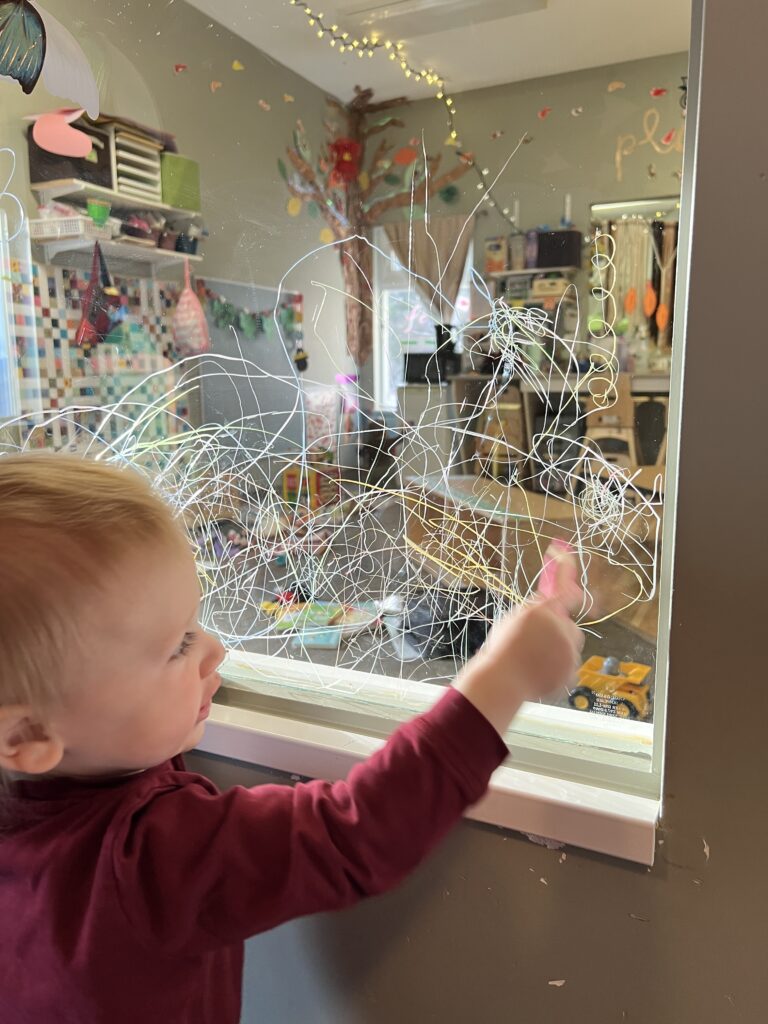
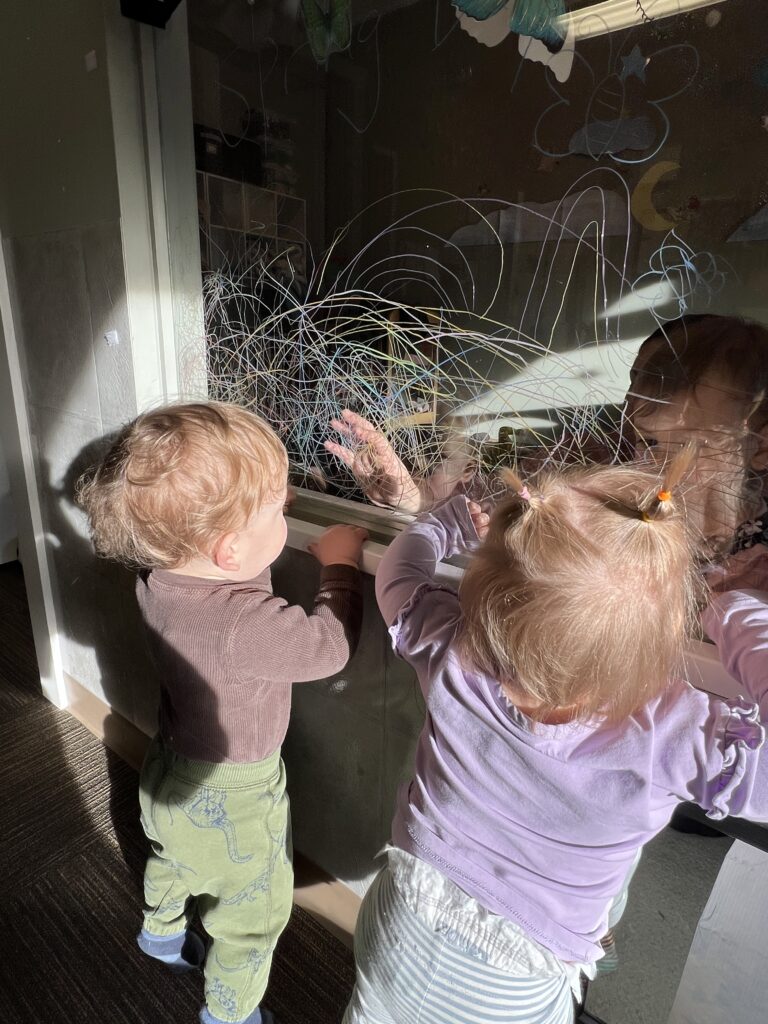
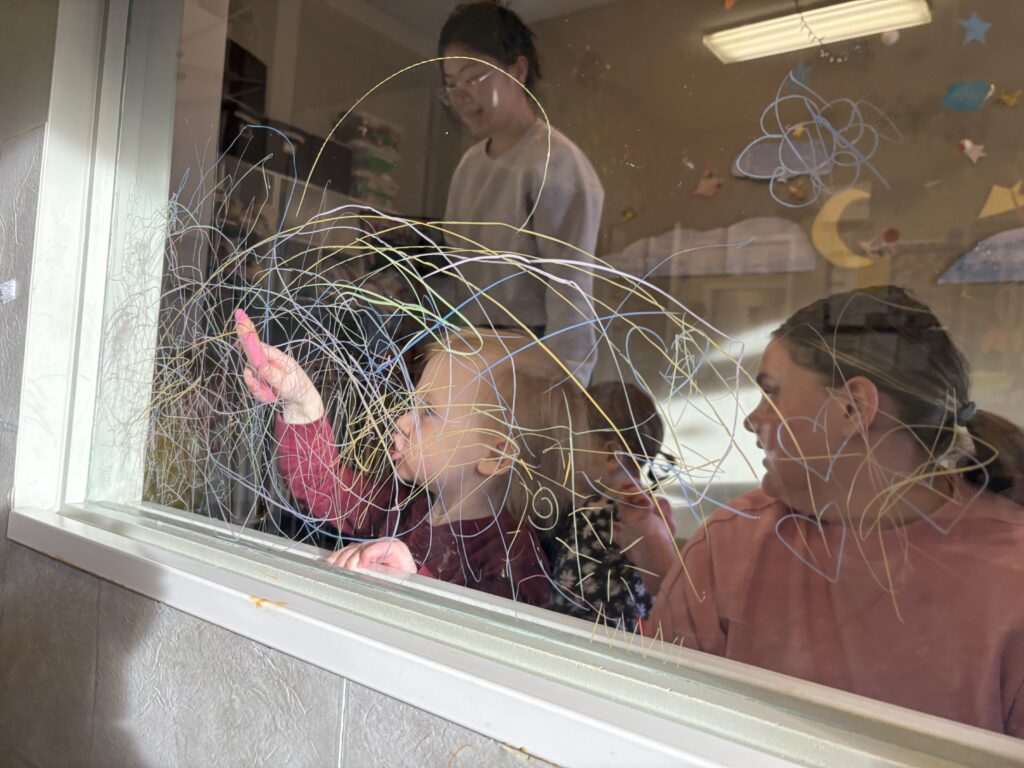
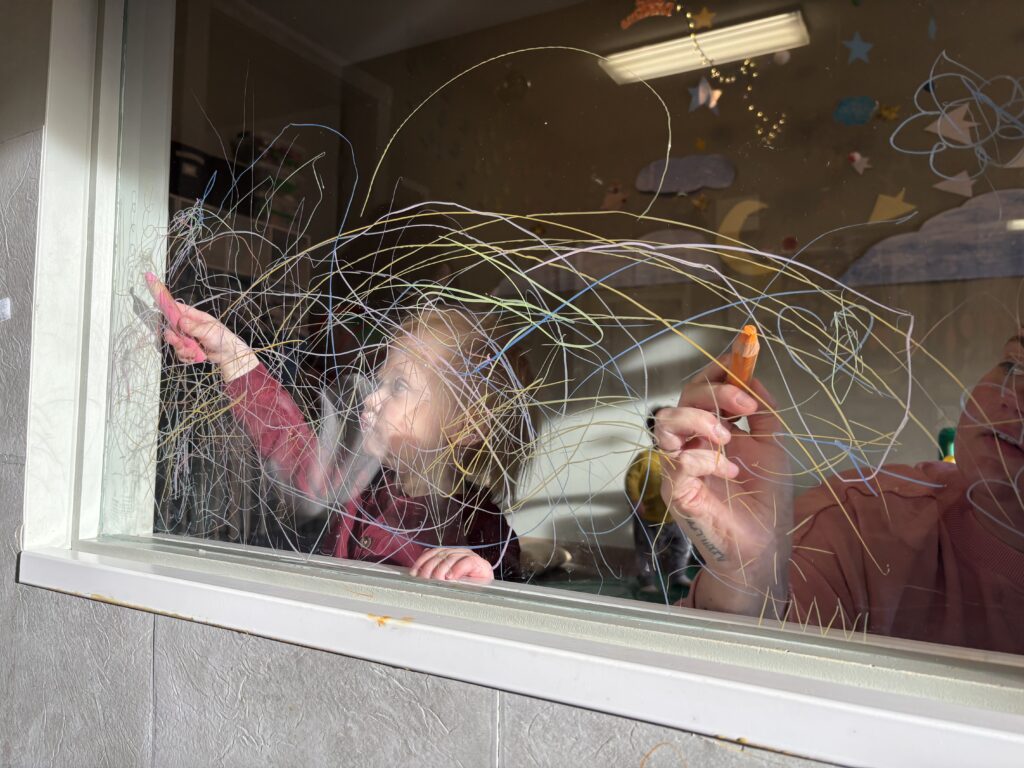

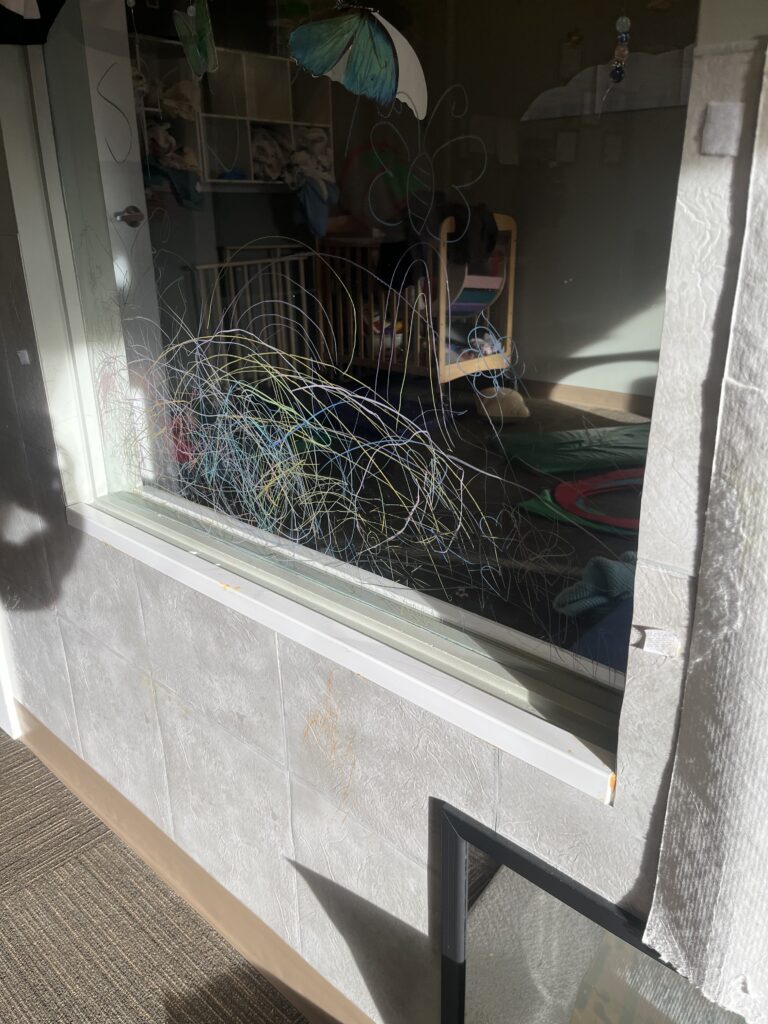
Explanation of the Happening:
The children and I did a drawing session where we used coloured pencils to draw on the windows that connect the nap room to the play room. The children were very excited when they saw something new and all the different colours of the pencils there was. I started by drawing on the window to see if they would follow and most of the children that came to participate starting drawing on the windows right away with no hesitation. I wanted to see how the children on the other side of the window would react to the drawings, which resulted in more children wanting to get involved with the drawing. The children would run between rooms to get to the other side to draw on that side, then they would run back and copy the drawing on that side. For some of the children, I noticed it helped with big movements and it kept their attention for a while.
How it’s bringing the group together:
Over my practicum I wanted to help build connections between children and educators in a way that would allow for everybody to participate, introducing drawing as a ritual instead of a craft. Drawing was something that I noticed most of the children were involved in and it allowed for the children to gather with their peers and educators.
Further my exploration:
I will be going back to the 3-5 room when I’m done my practicum, so I unfortunately cannot continue my drawing rituals with the infants. However, this gave me inspiration to bring a ritual into the 3-5 room, so one thing that the children in the 3-5 room enjoy is walks, I want to create a ritual around those and do more documentation.